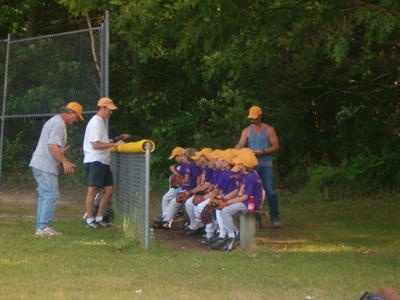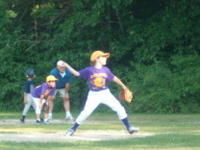
This month public school students in grades 3-8 are taking MEAP tests. While I was cooking dinner last Friday, Anna sat in the kitchen and launched into a 10 minute monologue about how to take a MEAP test.
"You have to fill in the bubbles right. The test is in one book and the answers are in another book. You have to fill in the right page of the answer book. And the right part. If you start to fill in the wrong page, don't erase it. Just go over and start filling in answers again on the right page. Then when you're done you can go and erase the other part. Really erase it. You only get 50 minutes. I mean an hour, almost, 50 minutes."
"You have to fill the whole bubble in and you can't make any marks outside of the bubble or you'll be marked wrong. If I accidentally make a mark outside of the bubble, I erase the whole bubble and start over again. Or sometimes I rub the eraser around the whole bubble to get the ones that got out. If there's even just one mark outside the bubble they mark it wrong, even if you knew the right answer. I don't know why they're like that. I know they like neatness, but...." She trails off and starts in again: "It's marked by a machine. They think the machine is real smart. But I don't know."
It was all about the bubbles. She never mentioned any content, or even what subject she was being tested on, but she knew how to fill in bubbles.
A few years ago we got rid of the voting machines with the levers and the funny half-curtain that opens "cha-chunk" when you're done and pull the big red handle over. Now adults fill in bubbles to vote, but we get to put each answer on the same page right next to its question. Our answers are read by the machine right there at the fire hall, and if it can't read a ballot we get to take it back and fix it or even get a new one and start over.
If you hang around on election day for very long, you'll see people of all ages who have trouble with the mechanics of filling in bubbles. Small wonder. Dr. Mel Levine, a pediatrician who studies learning, describes the task of putting pencil to paper as a coordination of a series of skill:
When a student writes and forms letters, he makes use of his graphomotor abilities. These special writing skills involve the coordination and control of the muscles at the end of his fingers. Some muscles are used to make a pencil move up and down, others to make the pencil move left and right, others to move it in a circular motion, etc. Since writing letters requires a combination of these movements, different muscles are used to form different letters. Not surprisingly, when students write, some have trouble getting their muscles to move in the correct way. The student’s first steps in forming letters involve identifying the letter to be written, using memory to recall what that letter should look like, and making and holding a mental picture of the letter. The student then "sends" signals from her brain to the finger muscles required to move the pencil and to form the desired letter. Finally, the student forms the letter in the right place on the paper.... Writing requires students to remember several things simultaneously (forming letters and words, using correct grammar and punctuation, recalling the ideas they want to write, etc.). If a student has a hard time retrieving any of this information from long or short-term memory, the entire writing process will be more difficult.Filling in bubbles is, of course, somewhat easier than writing, but still requires most of these skills.
While Richard and I were watching baseball last week, there was a play that involved picking up a grounder and making a split second decision to throw to first instead of trying to pick off the leading runner at third. As the announcers dissected the play, Richard said "You know what's wrong with these announcers"
"They talk too much?"
"They forget that at this level, it's all automatic. They're not thinking 'Can I make that throw? Should I try it?' They've done this so many times, its automatic." I can tell that he is thinking about Anna's Peewee baseball team, which he has helped coach for the last few years.
The team is a testament to the fact that learning is not linear. They have played together since T-ball,
 enthusiastically whacking the ball and trotting off towards third base. Last summer things finally seemed to be coming together for the kids. The were watching the ball, getting it under control, completing the throw to first base. Johnny as pitcher and Christian on first base were a particularly good combination.
enthusiastically whacking the ball and trotting off towards third base. Last summer things finally seemed to be coming together for the kids. The were watching the ball, getting it under control, completing the throw to first base. Johnny as pitcher and Christian on first base were a particularly good combination.Then one night Johnny was playing third with one man on second. Left field threw him the ball and he tagged the base, but the runner was called safe! Eating ice cream after the game, Richard explained that if it was not a force play, it was necessary to tag the runner before he reached the base. Johnny understood the concept and all seemed fine, but the next game and the game after that were awful. You could see the kids pick up the ball and then freeze, thinking about where to throw. Kids covering bases were looking to see where the runners were and then failing to catch the ball. The game was suddenly more complicated than just throwing to first or second.
Anyone looking for "Adequate Yearly Progress" with our team would have been quite

disappointed in those games. It's not the fault of the kids or the parents or the coaches. It's no fault at all, that's just what learning is like. Baseball, like anything else worth learning, is a game of many levels. You are going to have times when you don't seem to be learning anything. You are going to have times when trying to move to the next level makes you worse, instead of better, as you try make another part of the job "automatic". The kids that press on past the frustrating spots are the ones who are learning how to learn, who are going to succeed, no matter the subject.
Coaching through these periods is particularly frustrating. It is interesting to see my husband also moving to the next level, trying to figure out how to be a better coach. It supports my premise that people who volunteer with kids end up learning as much, or more, than the kids. The folks behind those MEAP tests should try a season or two of coaching PeeWee.
I'm not sure if filling in bubbles teaches perseverance. I'm pretty sure it's not the best way to teach anything important. I keep wondering why adults who are voting get to fill in bubbles next to the questions, while third and fourth graders have to fill in bubbles in an unwieldy answer book. A few years ago we could have said that we do it this way because voters are deciding important public policy and third graders are just being tested. Now we are using the results of these ridiculous prove-nothing tests to decide public policy, to fund or close entire schools.
The first day of MEAPs Anna had laryngitis and I started to tell her to go back to bed for a few hours. Liz reminded me that it was MEAPs, so I sent her on her way with the tongue in cheek admonishment to "Make money for your school." She is a trooper, playing every inning to the end, regardless of the score.

3 comments:
I loved reading your post about the MEAP test. It will be a grassroots effort on the part of parents that helps change this policy/test. The state of Michigan spends $$$ on this test (to a company in Iowa, by the way) to tell us what? I guess, in your daughter's case, she is an awesome bubble-filler-inner. :-)
hi i emailed to heather
hi good one
Post a Comment